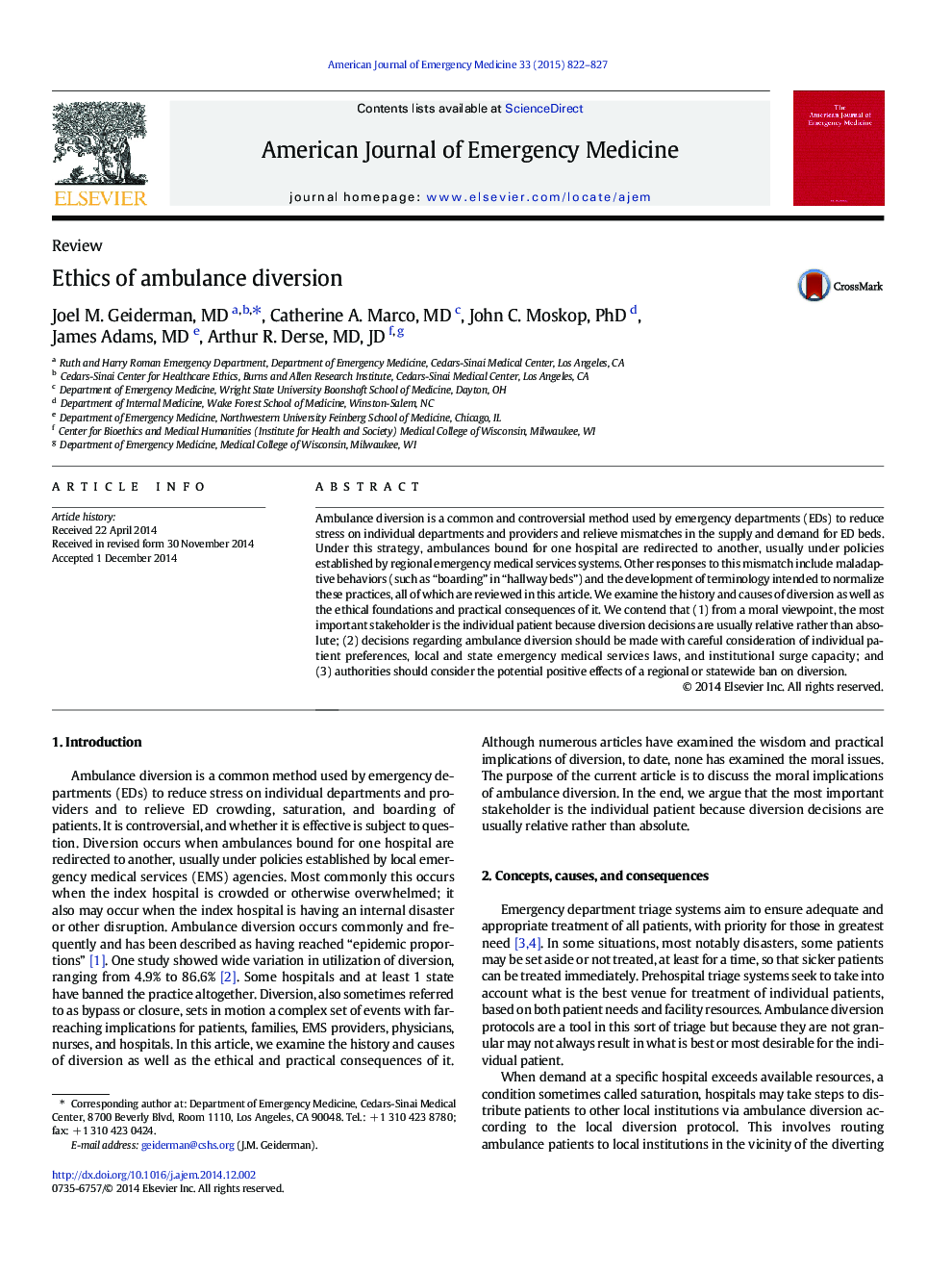| Article ID | Journal | Published Year | Pages | File Type |
|---|---|---|---|---|
| 3224233 | The American Journal of Emergency Medicine | 2015 | 6 Pages |
Ambulance diversion is a common and controversial method used by emergency departments (EDs) to reduce stress on individual departments and providers and relieve mismatches in the supply and demand for ED beds. Under this strategy, ambulances bound for one hospital are redirected to another, usually under policies established by regional emergency medical services systems. Other responses to this mismatch include maladaptive behaviors (such as “boarding” in “hallway beds”) and the development of terminology intended to normalize these practices, all of which are reviewed in this article. We examine the history and causes of diversion as well as the ethical foundations and practical consequences of it. We contend that (1) from a moral viewpoint, the most important stakeholder is the individual patient because diversion decisions are usually relative rather than absolute; (2) decisions regarding ambulance diversion should be made with careful consideration of individual patient preferences, local and state emergency medical services laws, and institutional surge capacity; and (3) authorities should consider the potential positive effects of a regional or statewide ban on diversion.
